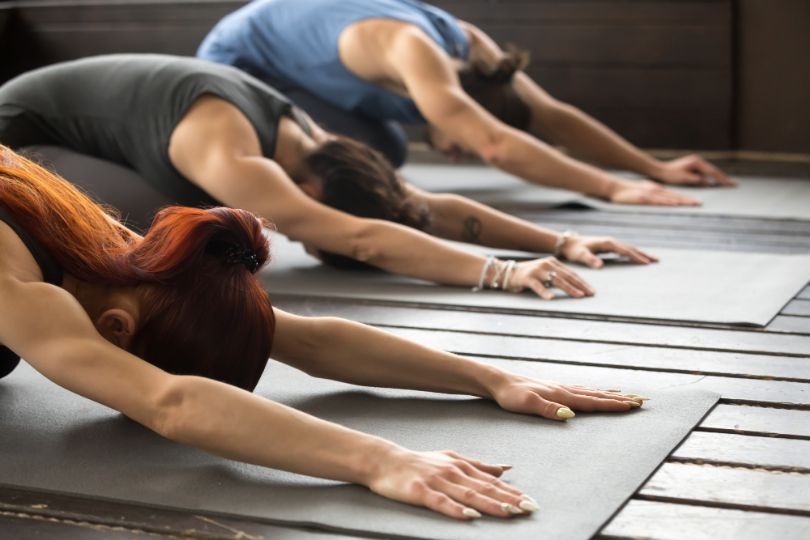 Since the 1970’s, Bikram Yoga (or ‘hot’ yoga) practitioners have been gathering in hot and humid rooms to do their exercises. Bikram Yoga was created by Bikram Choudhury, synthesizing techniques learned from hatha yoga into a special sequence. 26 postures and 2 breathing exercises are present within Bikram yoga, and those exercises are practiced in a hot room of 105 degrees with a humidity of around 40%.
Since the 1970’s, Bikram Yoga (or ‘hot’ yoga) practitioners have been gathering in hot and humid rooms to do their exercises. Bikram Yoga was created by Bikram Choudhury, synthesizing techniques learned from hatha yoga into a special sequence. 26 postures and 2 breathing exercises are present within Bikram yoga, and those exercises are practiced in a hot room of 105 degrees with a humidity of around 40%.
Celebrities as varied as Kareem Abdul Jabbar and Lady Gaga have espoused the benefits of Bikram yoga, though controversy surrounds the practice as being dangerous. Hot and humid rooms are the biggest difference of Bikram Yoga. The philosophy is that muscles are primed and ready to stretch at high temperatures, eliminating the need for warm up and a stretching period. Bikram Yoga sessions take exactly 90 minutes, a time specially calculated to provide the most out of your yoga session.
Advantages of Bikram Yoga
When practiced properly and under the care of a certified yoga instructor, Bikram yoga participants receive several health benefits.
Stimulated Blood Flow - Full body movements stimulate blood flow to all areas of the body, including the extremities and the brain. Increased blood flow boosts a person’s metabolic rate, encouraging weight loss and healthy cells.
Rids the body of toxins - Toxins are released through sweat within the 105 degree temperature. This is the body’s natural way of expelling any bad chemicals which have accrued.
Stretches Muscles - The warmer temperatures and the high humidity are prime environments to stretch the muscles. There are no warm-up exercises done before a Bikram Yoga session, as the climate is already conducive to muscle stretching.
Massages Lymphatic System - The lymphatic system prevents diseases and bacteria from entering your body and causing havoc. Bikram Yoga touches all systems within the body, especially the lymphatic.
Cardiovascular Workout - Each of the 26 positions is held for 30 seconds before released. Holding a particular position for a measurable duration stresses and strains your cardiovascular system, encouraging it to adapt to the stress.
The disadvantages of Bikram Yoga must also be taken into account when considering hot yoga as a form of exercise. Many of the advantages and disadvantages are seen as anecdotal. The following disadvantages have been cited.
Disadvantages of Bikram Yoga
Overstretching - After muscles have been stretched so far, they can become overstretched, causing muscle and joint pain.
Dehydration - The heat and the activity both lead to lots of sweating. Drink a lot of water before and after a Bikram Yoga session to make up for the loss while doing the exercise. Signs of dehydration include dizziness, vomiting, and fainting.
Quick Weight Loss - While losing weight is good, losing too much weight all at once can be hazardous. Your body tries to overcompensate from the shock, yo-yoing from fast weight loss to fast weight gain.
Every form of exercise has its advantages and disadvantages. The disadvantages of Bikram yoga can be lessened or alleviated under the tutelage of an astute teacher, but be aware of your body’s signals that you might be receiving too much of a good thing. Practicing Bikram yoga in moderation is the key to using this form of exercise to its fullest benefit.







